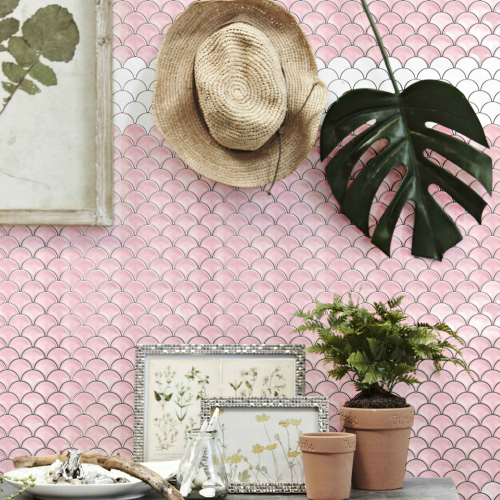Ceramic tiles are highly aesthetically pleasing home décor materials. You can use them anywhere – from your bathroom walls and floor down to your kitchen walls and floor.
However, they’re pretty fragile, which means that inadequate care will damage them and shorten their lifespan. On the other hand, even when you’re extra cautious with your ceramic tiles, they’re designed to last about 50 years, sometimes longer.
But again, you’ll still have to dispose of them. So, is recycling one of your safe disposal options? Please, read on to find out. We’ll also show you alternative and engaging ways to dispose of ceramic tiles. Dive in!
Can Ceramic Floor Tiles be Recycled?
While recycling is one of our best bets to save our environment and resources, not every material has that disposal option. For instance, we can’t recycle toilet paper because of the unsanitary uses it’s reserved for.
On the other hand, it’s made from recycled paper, which means recycling will only result in pulp because it’s very pliable.
Now, can you recycle ceramic floor tiles? Well, you can! But first, we’ll explore what they’re made of and what makes them excellent recycling materials.
The main component in ceramic tiles is clay. Throw in some sand, water, and enough heat, and you’ll have products.
Although you can recycle ceramic tiles, they aren’t picked up like your typical recyclable materials. So instead, you can take them to a local recycling center. But of course, you’ll have to inquire beforehand if they accept ceramic tiles. If they do, then you’ll likely have to take them down yourself.
Some landfills also make provisions for ceramic tiles. But again, you’ll have to make inquiries before taking them down.
Sure, your household waste ends up in landfills, but that doesn’t mean you can also include ceramic tiles in the garbage. It’s very unlikely that anyone will sort through them, which may result in these tiles ending up abandoned in landfills.
They’ll end up sitting there, even though they won’t have negative impacts on the environment. But they will take up space, so it’s best to dispose of them the proper way.
If you can’t seem to find a recycling center that accepts ceramic tiles, you can use the internet to find the nearest company that specializes in this process. You can also contact the authorities in your community for more information about it.
Can You Put Ceramic Tiles in the Recycling Bin?
Certainly! You can put ceramic tiles in the recycling bin. But of course, you’ll have to leave that activity to workers at a recycling plant.

Some materials cannot go in the recycling bin because of their impact on the recycling machine. For instance, you can’t put small items like pens, paper towels, and some other small items that can get stuck in the small parts of the machine.
When that happens, the workers at that recycling plant will have to stop the machine from working and carefully take out the parts that are stuck.
Now, some machines may not be strong enough to handle the required force for crushing ceramic tiles. That’s why it’s best to separate your waste from home.
The workers at the recycling company may not have the time to sort through these items. When the wrong material gets in the recycling machine, it can damage it within minutes.
So, ceramic tiles require a special recycling method. They also require stronger recycling machines, much stronger than the average ones that recycle household waste.
That’s why there are special recycling companies dedicated to recycling construction material. They’ll take on your ceramic waste if the machine for your community isn’t strong enough to handle the force for ceramic tiles.
Can You Paint Ceramic Tiles?
Some of us like our décor a little edgy, and sometimes different too. But at the same time, we have to consider the cost.
Getting unique construction materials like ceramic tiles may cost a significant amount. So, if you want to spruce up your bathroom and kitchen walls and tiles, you may have to do it yourself!
Of course, that may make you wonder if you can paint the ceramic tiles you mean to install in your home. The more aesthetically pleasing ones are more expensive, but that doesn’t mean you have to settle for basic designs.
Well, let’s talk about painting those tiles. It’s a feasible option, although it’s a bit trickier than painting walls and basic materials.
However, there are some caveats. For instance, while you can get a matte, glossy, or even monochrome finish on your ceramic tiles, they don’t always do so well when they’re constantly exposed to moisture. In addition, the paint can peel away with time.
If you want the paint job to last much longer, then it’s best to install the painted ceramics in the drier parts of your home. Now, that means painting the ceramic tiles on your bathroom floor may be off-limits because the floor most likely gets wet every day.
On the other hand, the walls can still have painted ceramic tiles, but you either have to use a shower curtain or ensure that your bathtub is far from them. That way, even if water splashes, it won’t get to the walls.
You can also choose a paint that’s particularly for bathrooms – these are usually more water-resistant than the typical paints.
评论
发表评论